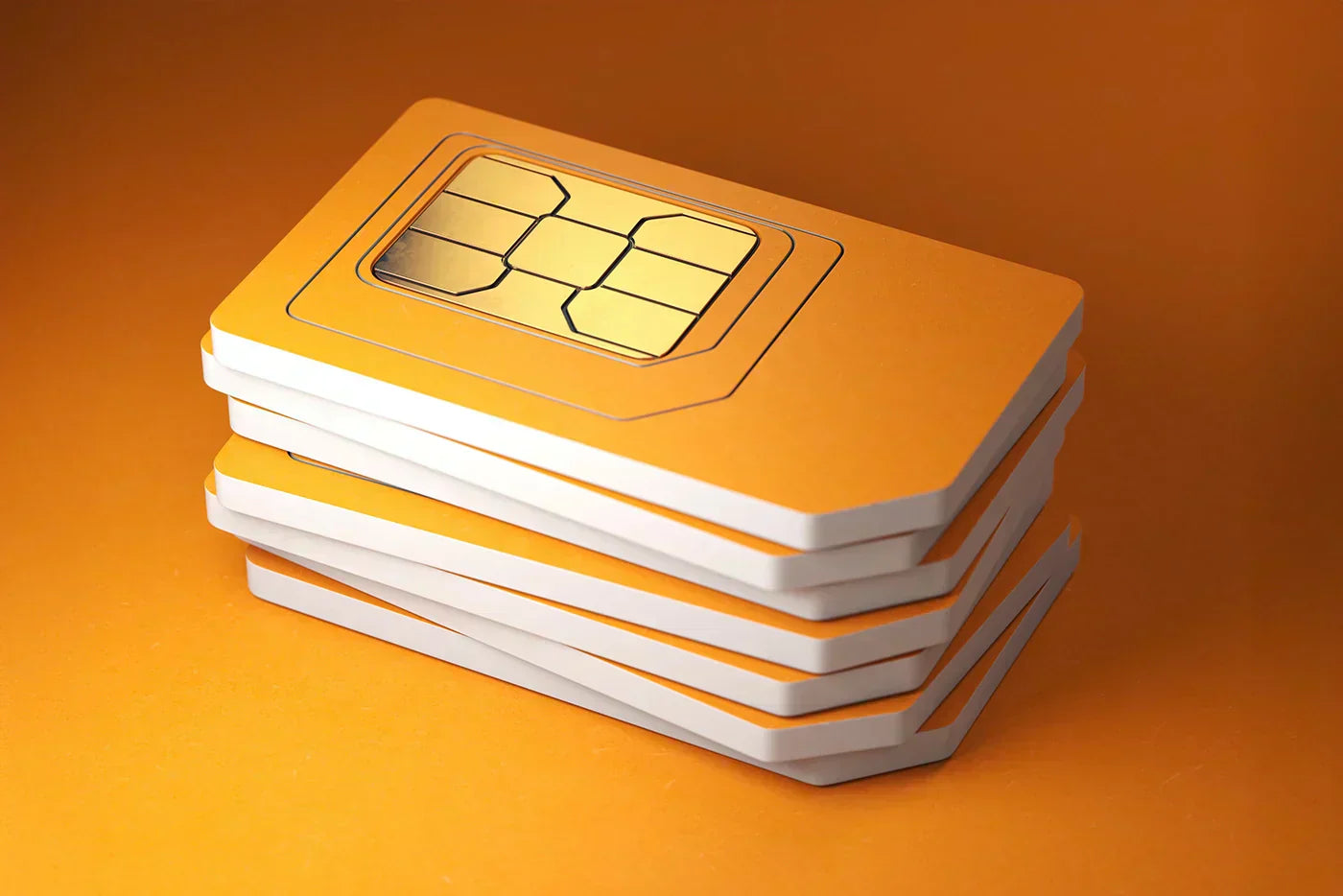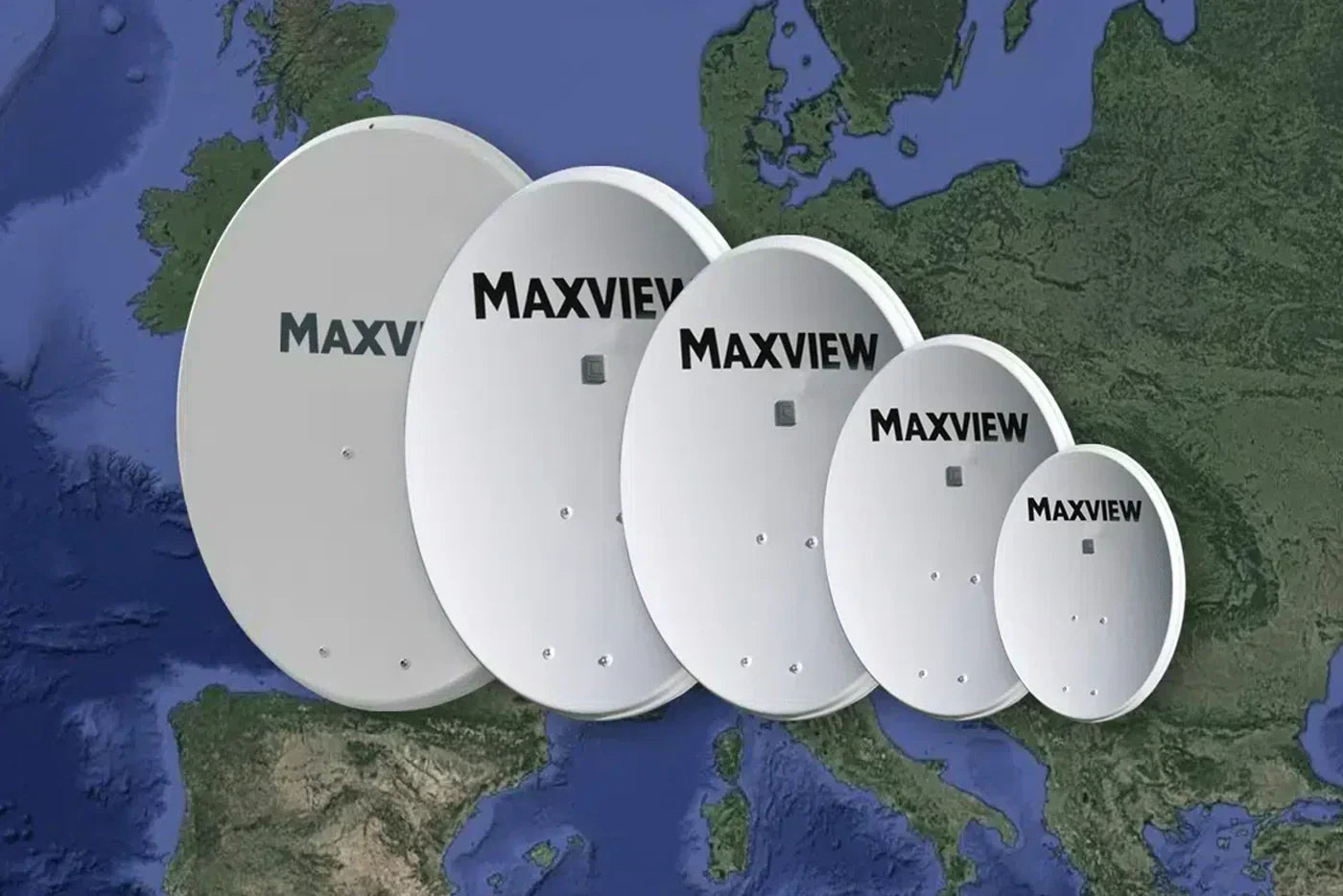So, you've kitted out your caravan, motorhome, or campervan with a Maxview Roam or Roam X, and your mobile haven is now Wi-Fi enabled. But what happens when you venture beyond the reach of campsite Wi-Fi? That's where a data SIM becomes your ultimate travel companion, freeing you from the hunt for elusive hotspots and keeping you connected wherever your wanderlust takes you.
Imagine streaming your favourite shows under a starry sky in the Scottish Highlands or video-calling family from a picturesque French village – all thanks to a reliable 4G or even super-fast 5G signal. This guide will help you navigate the world of data SIM plans, ensuring you pick the perfect one for your adventures, both in the UK and across Europe.
Demystifying Data SIM Plans: Your Mobile Internet Powerhouse
Think of a data SIM plan as your mobile phone's data-only cousin. For a monthly fee, typically ranging from £15-£25, you receive a SIM card. Pop this into your Maxview Roam or Roam X (or a dedicated 5G-compatible router), and voilà! Your device connects to a mobile broadband network, giving you internet access via 3G, 4G, or 5G, just like on your phone.
The key differentiator between plans is the amount of data you get each month, from a modest 5GB to glorious unlimited allowances. This data allowance is the primary driver of the monthly cost.
You'll find data SIM plans offered by the UK's major mobile networks – Three, Vodafone, O2, and EE – as well as by smaller providers like GiffGaff and VOXI, who often leverage the infrastructure of the big four.
A crucial tip: always double-check you're buying a "data SIM" plan, as some companies differentiate between phone SIMs and data SIMs, and the latter is essential for your Maxview Roam or Roam X.
How Much Data Do You REALLY Need? Your Digital Lifestyle on the Road

Choosing the right data allowance is paramount, as it directly impacts your monthly spend. What uses the most data? Without a doubt, video streaming. Hours of Netflix, Amazon Prime, YouTube, or even social media videos can quickly gobble up your allowance. With 5G, you'll find content loads much faster, which can inadvertently lead to higher data consumption if you're not careful, as you're more likely to stream in higher resolutions (like 4K) or download larger files more frequently.
Consider this:
-
High-definition (HD) video can consume around 2-3GB per hour.
-
Ultra-high-definition (4K) video can jump to 7-8GB per hour.
-
Simple tasks like checking emails, Browse news articles, and basic Google searches use significantly less data.
To help you decide, here's a rough guide (keeping in mind that 5G enables higher data activities):
-
10-30GB Plan: Ideal for regular web browsing, emails, and the very occasional video. Not enough for consistent HD streaming.
-
30-100GB Plan: Allows for a movie or two each week in HD, alongside regular web browsing and social media use. A good all-rounder for moderate users, but if you're routinely streaming in 4K or working remotely with large file transfers, you'll hit limits quickly.
-
Unlimited Data Plan: Your best bet if you're a heavy internet user, regularly stream high-definition or 4K video, engage in online gaming, or work remotely from your vehicle. The good news is that unlimited data plans are often surprisingly affordable compared to those with high limits, making them a popular choice for maximum peace of mind with 5G speeds.
Navigating European Roaming: The Post-Brexit Landscape

Here's where things get a little more complex. While UK data limits are straightforward, crossing into Europe introduces "fair usage" limits and potential additional charges. Since Brexit, most mobile networks have adjusted their EU roaming policies. This means your generous UK data allowance might be capped when abroad, and you could face daily or monthly fees for the privilege of staying connected.
Important Disclaimer: Roaming policies are dynamic and subject to change. While the information below is accurate as of July 2025, always check with your specific network provider directly before you travel for the most up-to-date details on charges, fair usage policies, and covered destinations. Pay particular attention to whether 5G roaming is available and if it incurs additional costs or has separate limits.
Here's a snapshot of common EU roaming policies:
-
O2: Continues to offer inclusive EU roaming up to a fair usage limit of 25GB per month. If your UK allowance is higher, you'll be capped at 25GB. If you exceed this, charges apply (currently around £3.50/GB). O2 generally does not charge a daily roaming fee for customers on Pay Monthly plans in their Europe Zone. They also have a fair usage clause regarding continuous use outside the UK (e.g., more than 63 days in a four-month period).
-
EE: For customers who joined or upgraded on or after 7 July 2021, EE typically charges a daily fee (currently around £2.59 per day) to use your UK allowance in their EU roaming zone. A fair usage policy of 50GB per month applies. Some of their more expensive plans might include a "Roam Abroad Pass" as a Smart Benefit to waive daily charges.
-
Vodafone: Many Vodafone plans incur a daily charge (currently around £2.42 per day) to use your UK allowance in most European countries (Zone B). They typically have a fair usage limit of 25GB per month. Vodafone also offers European Roaming Passes (e.g., £12 for 8 days or £17 for 15 days). Some "Xtra" SIM plans may include roaming.
-
Three: Generally charges a daily fee (currently £2 per day) for "Go Roam in Europe" destinations. A fair usage limit of 12GB per month applies to data used while roaming. For Pay As You Go, Three has also introduced charges for roaming, so check their latest add-ons.
-
VOXI: Requires the purchase of a European Roaming Pass (starting from £2.45 a day) to use your allowance in Europe. A fair usage policy of 20GB per 30-day plan applies to data while roaming.
-
Other smaller mobile network operators: Many may not offer inclusive roaming, or have stricter limits. Always check their specific terms. Some, like Tesco Mobile, have indicated no EU roaming fees until 2026 for customers who joined or upgraded before June 2022.
Beyond data limits, most companies also restrict how long you can roam in Europe, often around two months within any four-month period.
Despite these restrictions, a UK SIM plan can still work for many European trips. A week in France with an EE data SIM and its 50GB allowance, even with a roaming charge, might be perfectly sufficient. However, if you're a frequent or long-term traveller to specific European countries, it's often more economical to consider a local foreign data SIM. In some cases, it might even be cheaper to "roam" with a foreign SIM in the UK given the current UK network restrictions for overseas use! For a deeper dive into EU roaming policies, search online for detailed guides on roaming SIM cards from reputable sources.
The Multi-Network Advantage: Roaming with Seamless Connectivity

For those who crave ultimate connectivity and freedom from roaming headaches, multi-network SIM cards offer an intriguing alternative. Providers like BroadbandGo offer SIM's that don't rely on a single mobile network.
The benefits are compelling:
-
Superior Coverage in Remote Areas: Your multi-network SIM intelligently switches to the strongest available network, minimising signal dropouts and boosting speeds, even in those charming, off-the-beaten-path locations. This is particularly beneficial where 5G coverage might be patchy, allowing it to fall back seamlessly to the best 4G signal.
-
Hassle-Free EU Roaming: Some multi-network providers, like BroadbandGo, allow you to use your entire data allowance across numerous EU countries with no fair usage limits. This means genuinely seamless connectivity as you criss-cross the continent, without worrying about different 5G roaming policies per country.
The trade-off? Multi-network SIMs generally offer less data for your money compared to traditional single-network plans. If you're a heavy data user, especially for 4K video streaming or extensive remote work, a traditional SIM (and perhaps separate local European SIMs) might be more cost-effective. But for light to moderate users focused on browsing, emails, and news, the convenience and enhanced coverage of a multi-network SIM can be invaluable.
Pay As You Go vs. Pay Monthly: Flexibility vs. Value
When choosing your data SIM, you'll face the classic dilemma: pay as you go (PAYG) or a pay monthly contract.
-
Pay As You Go (PAYG): Offers maximum flexibility. You're not tied to a contract, meaning you can cancel anytime. This is ideal if you only use your caravan for a few months a year. However, you'll typically pay a higher monthly cost for the same data allowance, and EU roaming options might be more limited.
-
Pay Monthly: Requires a commitment, usually 12 or 24 months, with break fees if you cancel early. The upside is a lower monthly cost for the same data, and potentially better EU roaming inclusions. If you're on the road most of the year and prefer consistent billing, this is likely the more practical choice.
Does Your Chosen Network Really Matter? Coverage is King (and 5G is the New Crown)!

While EE often boasts slightly superior overall 4G coverage in the UK, 5G rollouts are rapidly expanding across all major networks. However, "generally" isn't good enough when you're relying on a connection in a specific caravan park or remote location.
Your absolute best course of action is to check the network's coverage map for the postcodes you plan to visit. Look for not just 4G, but increasingly for 5G coverage, especially if your router (like a Maxview Roam 5G) is 5G-compatible. Faster 5G speeds mean smoother streaming, quicker downloads, and a more responsive internet experience overall.
Here are direct links to the major UK networks' coverage checkers, and a general checker for all networks:
-
Ofcom Mobile Coverage Checker (All UK Networks): https://www.ofcom.org.uk/mobile-coverage-checker
-
EE Coverage Checker: https://ee.co.uk/help/mobile/roaming/check-coverage
-
O2 Coverage Checker: https://www.o2.co.uk/coverage-checker
-
Three Coverage Checker: https://www.three.co.uk/support/network-and-coverage/coverage
-
Vodafone Coverage Checker: https://www.vodafone.co.uk/network/status-checker
When you enter a postcode, aim for "Good indoor and outdoor 4G and 5G coverage" where available as this dramatically increases your chances of a fast, consistent connection. Even if 5G isn't everywhere yet, a 5G-compatible router will typically be excellent at picking up the best available 4G signal too, making it a future-proof investment.
If a network's map shows patchy 4G or only 3G coverage, explore other providers. While 3G is adequate for basic browsing, it will feel slow, and video streaming will likely suffer from buffering. In such cases, consider pre-downloading entertainment before you leave home. Many streaming apps now offer this feature, allowing you to enjoy your content offline.
Choosing the right data SIM plan and ensuring your equipment is 5G-ready can transform your caravan, motorhome, or campervan into a truly connected mobile base. By understanding your data needs, navigating roaming policies, and checking coverage, you'll be well on your way to seamless adventures, wherever the road takes you.
Ready to Compare Options and Find the Best Data SIM for Your Needs?
Use Money Saving Expert's SIM Comparison Tool to get started!
This tool can help you filter by data allowance, network, and contract length to find deals that fit your budget and usage habits.





Leave a comment
All comments are moderated before being published.
This site is protected by hCaptcha and the hCaptcha Privacy Policy and Terms of Service apply.